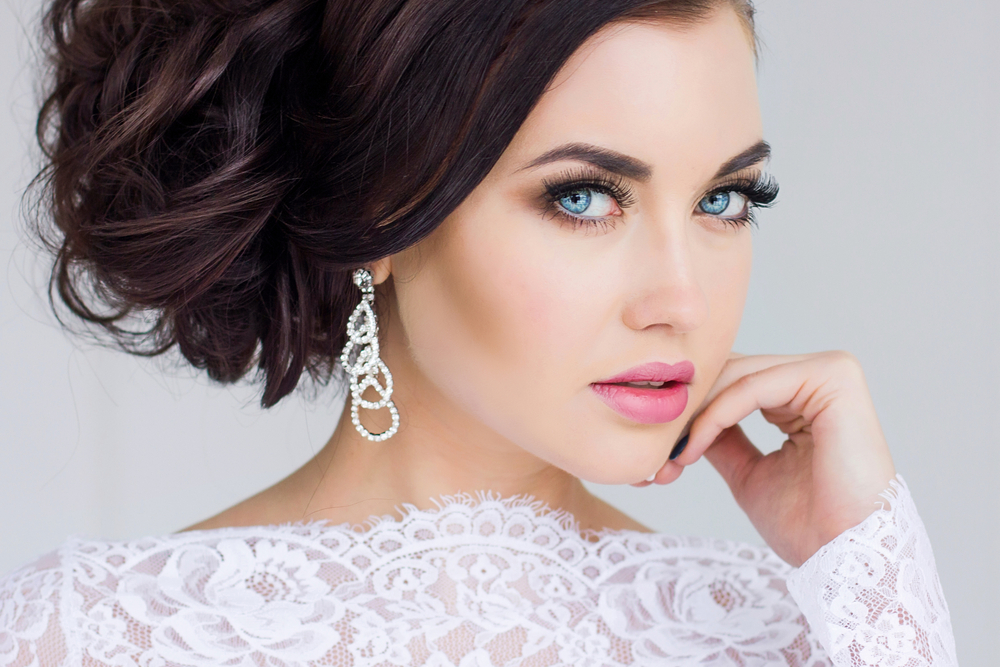Learn More
Dysport, Botox, and Xeomin are all non-surgical, injectable neuro-modulators used to smooth and reduce the appearance of lines and wrinkles. They are made of Botulinum toxin Type A, which works by temporarily relaxing overactive muscles that create wrinkles and fine lines in the face and neck. Common treatment areas for these FDA products include Glabella/Frown Lines, Forehead Lines, Crows feet, Bunny Lines, Eyebrows/Hooded Eyes, Lipstick Lines, Chin Dimples, Jawline and Neck. Botulinum toxin can also treat conditions including migraines, bruxism (teeth grinding), and excessive sweating otherwise known as hyperhidrosis.
What are wrinkles?
Wrinkles are one of the most common signs of aged skin. They appear as deep creases, folds or ridges on the skin’s surface and start to appear as a person gets older. They first appear in areas of the face, where repeated facial expressions cause the skin to naturally fold over, such as frown lines on the forehead or crow’s feet around the eyes. They get deeper and more pronounced as skin becomes thinner and loses elasticity over time.
What causes wrinkles?
The ageing process is the key cause of wrinkles. As the skin ages, skin cells divide at a slower rate, and the middle layer of the skin (the dermis) begins to thin. This skin layer is made up of connective proteins called collagen and elastin, which are essential components that keep the skin firm, taut and hydrated. These proteins gradually reproduce at a slower rate as we age, so the skin begins to lose its elasticity and firmness. This allows natural facial expression wrinkles to deepen, and new wrinkles to form. Our skin also loses fat stores which keep the skin full and voluminous. Instead of being evenly distributed, fat can start to clump up in places, which can reduce the volume in certain areas and make existing wrinkles look worse.
How to get rid of wrinkles
There is a variety of non-surgical methods that we can adopt to reduce the appearance of wrinkles. At Elite Aesthetics, we specialize in non-invasive wrinkle treatments that require no downtime or surgery. During your consultation, we will analyze your face and create a plan to smooth fine lines and address wrinkles in order to achieve facial rejuvenation. For example, Dysport, Botox or Xeomin treatment may be recommended for various areas. Dermal Fillers may also be discussed to create volume to areas of the face where deep lines may be present. We only use FDA-approved gold standard products clinically researched for their safety and efficacy. The best results are often achieved by customizing a combination of different treatments. Our qualified medical practitioners will guide you along on the way on a personalized treatment plan.
Upper face
Glabellar/Frown lines
Glabellar/Frown lines are the vertical creases that appear between the eyebrows, generating a tired or angry look. This is a very effective area on which to use Dysport, Botox or Xeomin. An experienced practitioner can subtly smooth these frown lines, resulting in a rejuvenated and more relaxed appearance. If the glabella lines are deep set, the practitioner is likely to recommend treatment with dermal filler in combination with Botulinum Toxin, which is a highly effective way to fill and smooth the area simultaneously.

Before 
After
Forehead lines
Forehead lines, also known as ‘surprise lines,’ become more apparent as we age. Excessive lines on your forehead can give the face and skin an aged appearance.
Horizontal forehead lines are mostly due to genetic aging. Sun damage or smoking can also result in the formation of creases that are deeper and more difficult to treat. Our anti-aging injectables can lessen the effect significantly, During your consultation, your practitioner might recommend a combination of a neurotoxin and another treatment, such as dermal filler for deeper more difficult lines.

Before 
After
Top of the nose (bunny lines)
Bunny lines are the creases that appear when the nose wrinkles up; for example, when we sniff or smell something.
The careful placement of anti-wrinkle injections at either side of the nose can reduce the appearance of these lines. An experienced practitioner should administer the injections as your smile can be affected if they are not carried out properly.
Eyebrows/hooded eyes
There is an advanced technique that can be used to sculpt and lift the eyebrows to form the shape you desire. Sometimes called a ‘chemical brow lift’, this procedure involves an experienced practitioner placing injections in a careful combination of areas on the upper face to open up the eye area and left it droopy lids.
The brow is well supported and its position above the eye remains high on younger faces. However, the effects of ageing can cause the brow to drop, giving the eyelid a ‘hooded’ appearance. This can create horizontal folds in the surrounding skin. Botulinum toxin can be used very effectively to counteract this effect, raising and defining the eyebrows. However, it’s important to use the treatment sparingly in this area to avoid the recognisable overarched, ‘surprised’ look.
Every person’s face is unique, therefore the precise placement of the injectable treatment and intended overall result will be determined with your practitioner during the consultation.
Around the eyes (crow’s feet)
The appearance of fine lines, or crows feet at the outer corners of the eyes, and their presence even when you’re not smiling, is often associated with aging. However, Neurotoxins are very effective in reducing their appearance. It’s therefore one of the most popular areas for the treatment.
With careful assessment, anti-ageing injectables in this area can also help alleviate drooping eyelids – an effect that can make the eyes appear smaller.
Lipstick lines

The fine lines around the mouth or ‘lipstick lines’ become more apparent with age and and often become an area of concern. Most cosmetic practitioners would recommend treating these with dermal fillers rather than Neurotoxins.
We use muscles in this area when we smile and for other facial expressions. Although some practitioners might use Botulinum Toxin injections to help turn the corners of the mouth up and improve a person’s smile, this is usually carried out in conjunction with dermal fillers.
For other lines around the mouth, most practitioners would recommend the use of dermal fillers to smooth the wrinkles, creating a refined surface to the skin.
Chin (to prevent dimpling)
As we get older, the muscles in the chin, known as the mentalis muscles, become overactive – meaning they flex more often than they should, creating a dimpled, puckered appearance.
The following issues worsen the situation:
- tissue loss, making the skin appear thinner
- sun exposure
- bone loss
- gum recession
- receding chin
Botulinum Toxin can be used to relax these muscles, thereby smoothing and reducing the overall dimpled effect.
Jawline and neck
Lines and wrinkles can develop on the neck as we age due to a number of factors, including:
- genetics
- the effects of gravity on the skin
- weakened collagen
- overworked facial muscles
Botulinum Toxin can be used to smooth the neck. It is effective at relaxing two types of lines around the neck:
Horizontal Lines – As we get older, horizontal creases or bands naturally form on the neck. We can reduce these lines by injecting small amounts of Botulinum Toxin above and below the wrinkles wherever they appear – this could be all the way around the neck. Some practitioners refer to this as a BOTOX® ‘necklace’. Vertical Lines – Some people, especially those who exercise a lot, develop rope-like vertical protrusions on their neck that are particularly apparent when they speak. The platysma muscles cause these bands to develop. They strengthen and grow through years of eating, straining and general tension in the jaw. The muscles extend from the top of the chest to the lower jawline and can be more apparent when a person smiles. We sometimes refer to sagging platysma muscles as a ‘turkey neck’.
However, we can smooth and relax these bands with Botulinum Toxin treatment.
Jaw angle (teeth grinding – bruxism)
Prolonged episodes of teeth grinding and jaw clenching – known as bruxism – can result in:
- worn teeth
- headaches
- earaches
Bruxism occurs subconsciously, often during sleep. Sleep conditions, such as snoring and obstructive sleep apnoea (in which your natural breathing patterns are disrupted), have been linked to incidences of bruxism, as well as stress. Bruxism may not be permanent; however, episodes often occur during times of great anxiety. Sufferers are also prone to overly clenching their jaw when concentrating particularly hard while awake. Botulinum Toxin injected into the jaw area can relax the muscles and effectively treat the condition.
Frequently Asked Questions
Should I undergo Botulinum toxin treatment?
You may be a candidate for if you are bothered by the appearance of lines and wrinkles on your face. Although many patients are candidates for Botulinum toxin injections, it is not for everyone. You must be a healthy adult over the age of 18 to qualify for injections.
You are NOT a candidate for treatment if you have any of the following contraindications:
- Pregnancy and lactation
- Allergy to any of the components of the drug
- Infectious skin lesions at the treatment areas.
Less strict contraindications listed below will be reviewed by your practitioner who will then decide if you are a candidate for treatment.
- The use of certain antibiotics and antidepressants
- Oncological disease
- Infectious disease in the acute stage ( including acute respiratory viral infections, intestinal infections)
- Autoimmune Disease
- Severe facial nerve damage
- Diabetes
- Myopia and strabismus
- Recent facial surgery
For more information about Botulinum toxin and whether it is right for you, schedule a consultation with us at your earliest convenience.
What should I expect during my injections?
Treatments take only minutes to complete and are performed from the comfort of our Med Spa. A series of tiny injections are placed around targeted facial muscles. Though there may be some initial soreness at the injection site, most people experience little or no bruising after treatment. Patients can return to work or other activities immediately after treatment. It is important, however, to avoid apply pressure or rubbing to the injections sites. We do recommend avoiding exercise for 4 hours after infection as well as laying down or dropping the head over for 4 hours.
How long do the results last?
You will begin to see the wrinkles diminish and feel the muscles relax approximately 2-3 days after treatment. The results will continue to become for evident during the initial 14 days. Results typically last 3-6 months. Consistency with continued treatments is key with all of the brands of Botulinum toxin so that the muscles can not recreate the wrinkles. Results vary by individuals therefore your practitioner may recommend follow-up treatments every 3-6 months.


